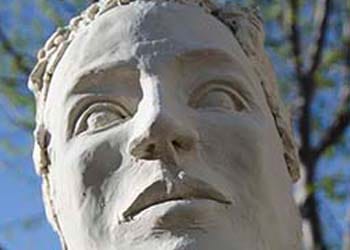Blog
Two years of living Graphic Novelly – redux, Part 10

Using clay to model characters can be very useful for a number of reasons. I have been working on an animal character in my new book and wanted to have a more expressive face to show emotion on a more human level. As one of the characters is a cat, the eyes are largely to the front like humans. This is typical for predators. The difficulty is getting more expression around the eyes and mouth given the structure of feline faces. The other obstacle is that if the cat’s face if modified, how will it look from different angles.
I have used clay models before with human features and found them to be of some help. The very exercise of making the clay model and working in 3 dimensions is also instructive. There is a lot to learn about form when you make a 3-D model. As you sculpt, you see the structure of the face from different angles and with a new appreciation for details and the underlying anatomical structures.
In this case, making a clay cat face would allow me to set a character and also have the luxury of looking at the model from various angles, with different lighting. It helps in gaining insights into extreme angles.
As you will see in the model below, the clay is worked on a wooden pedestal. As I am not firing it, I don’t care if it cracks later. The wooden frame is padded with material to give some form and shape to the head before adding features in clay. As clay shrinks when it dries, it will eventually crack, but I don’t really care in this case. The model is not perfectly finished as it is a drawing model, but, even when the clay is dry, you can still make some changes by shaving away clay. You just can’t add wet to dry clay at that point.

All images are copyright by the author.
I had played around with sculpey for this purpose, but as sculpey is better for small items where you only need thin layers of material, I quickly moved to clay so I could work in much larger scale.